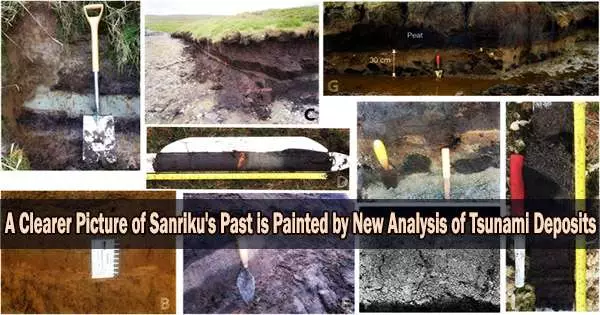A research team from the universities of Tohoku, Hokkaido, and Tokyo has created a high-resolution radiocarbon dating technique that can precisely date tsunami deposits. This technology provides a crucial window into past catastrophes and helps scientists better understand how frequently tsunamis occur.
Scientists can learn valuable information about tsunamis that occurred before records were kept from tsunami deposits. They make the size and frequency of tsunamis known. However, occasionally the sediment is either incomplete or has been washed away.
The Tohoku region was propelled into the international spotlight by the Great East Japan Earthquake and Tsunami of 2011. Yet throughout its history, the region has been vulnerable to earthquakes and tsunamis.
Scientists disagree over what tsunamis actually hit the Sanriku Coast, a portion of the northeastern coastline that includes present-day Iwate as well as portions of Aomori and Miyagi.
The village of Noda is strategic for two reasons. Tsunami deposits formed between the 14th and 17th centuries have been preserved there, and Noda has inland areas where only giant tsunamis are capable of inundating.
Takashi Ishizawa
Scientists were unable to distinguish between sediments from the Sanriku Coast that are associated with the 1454 Kyotoku Tsunami or the 1611 Keicho Oshu Tsunami due to inconclusive data.
The research team, lead by assistant professor Takashi Ishizawa of Tohoku University, used their radiocarbon dating technique on a village in the Iwate Prefecture.
“The village of Noda is strategic for two reasons,” says Ishizawa. “Tsunami deposits formed between the 14th and 17th centuries have been preserved there, and Noda has inland areas where only giant tsunamis are capable of inundating.”
The researchers concluded that the material belonged to the 1611 Keicho Oshu Tsunami, not the 1454 Kyotoku Tsunami, after analyzing the data and comparing it to tsunami records from the vicinity.
Moreover, they found the prevalence of giant tsunamis since the 1611 Keicho Oshu Tsunami occurred at intervals between 100 to 200 years.
For the purpose of more accurately reconstructing the history of tsunamis throughout the whole Japan Trench, Ishizawa and his team are looking to extend a similar methodology to other sites, such as the Sendai Plain.





